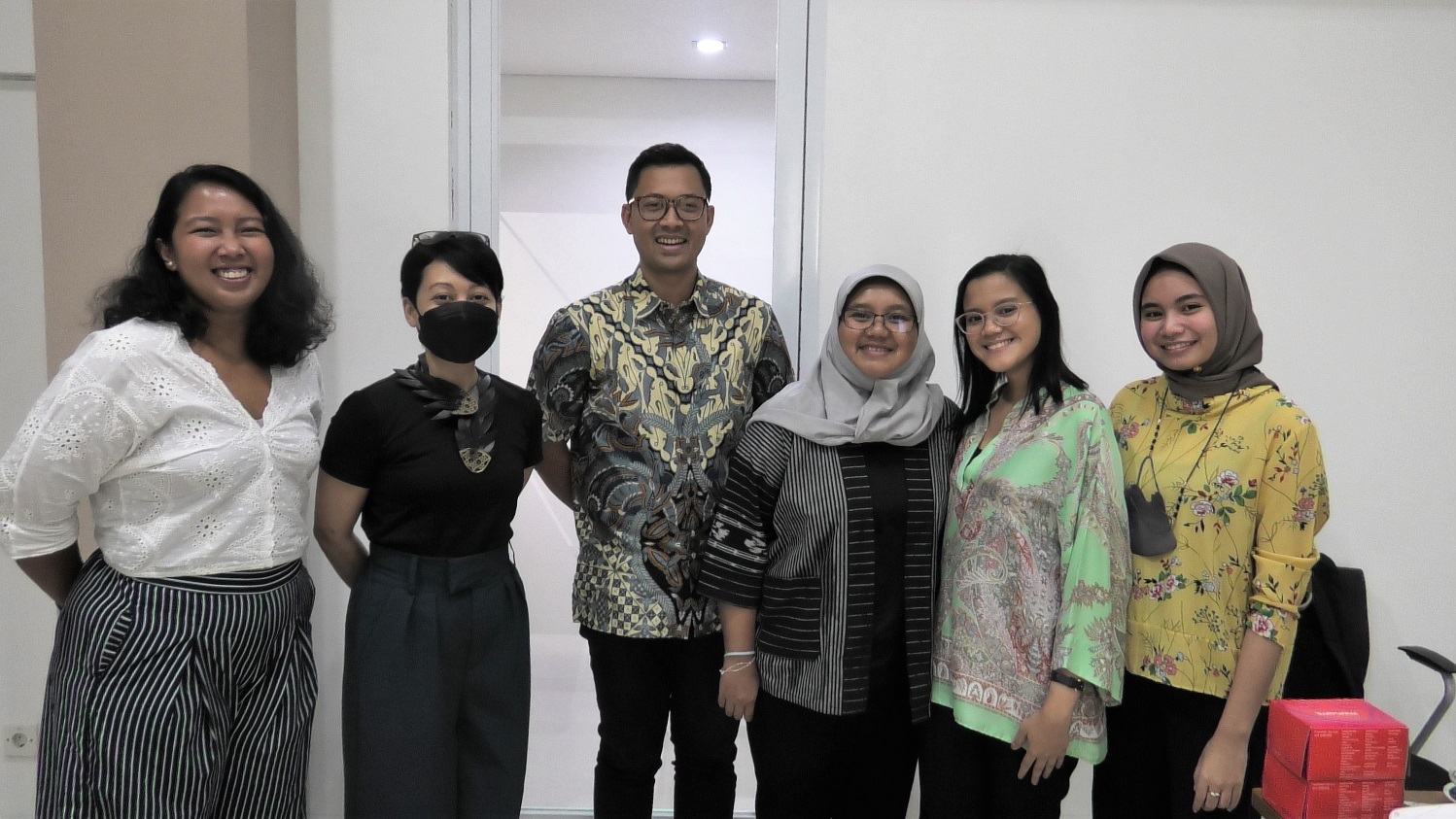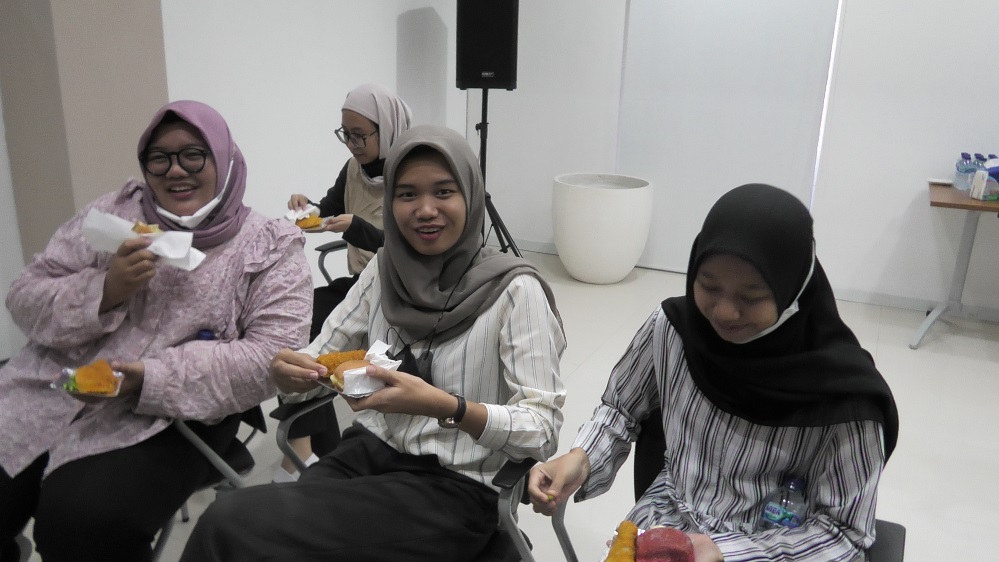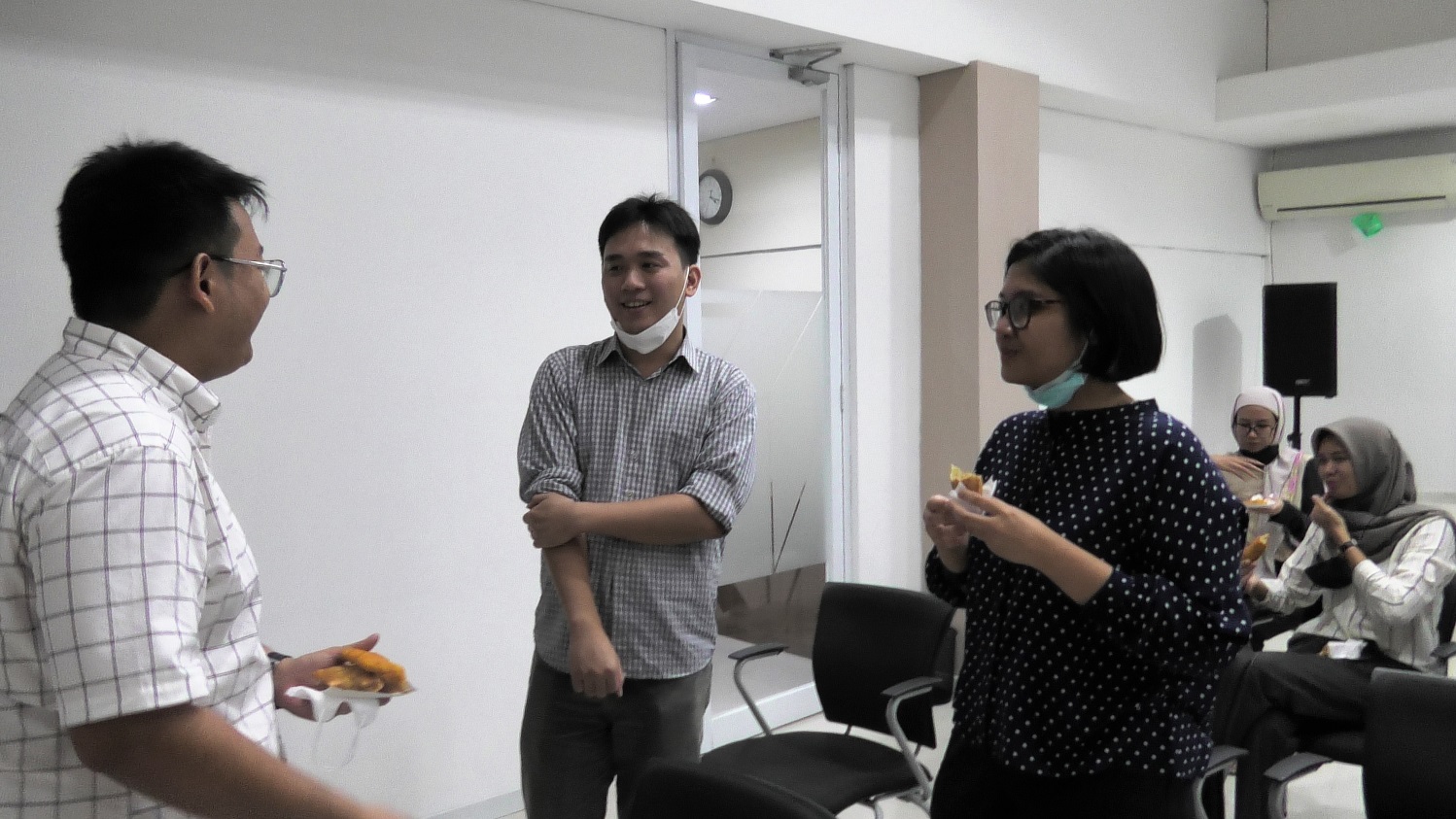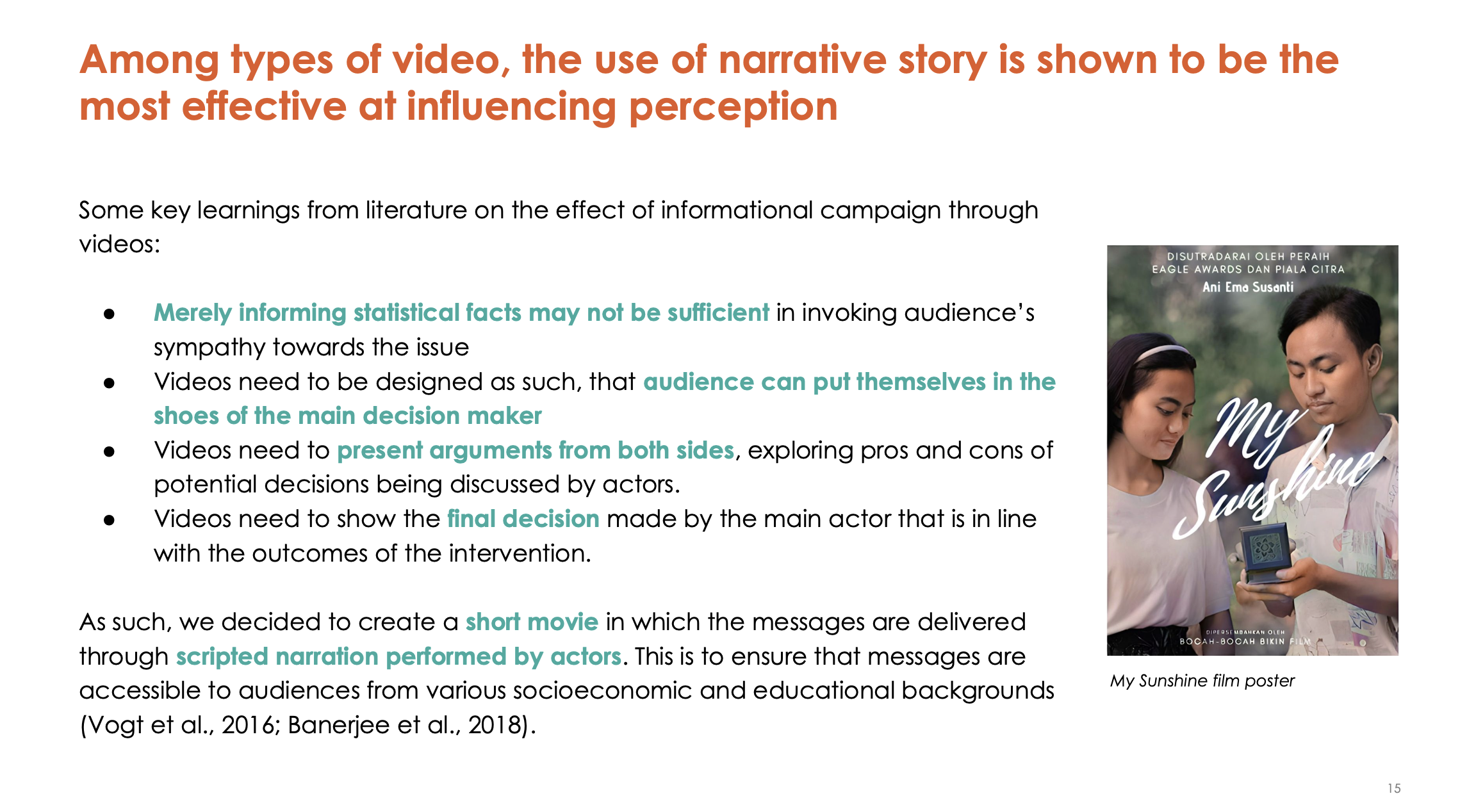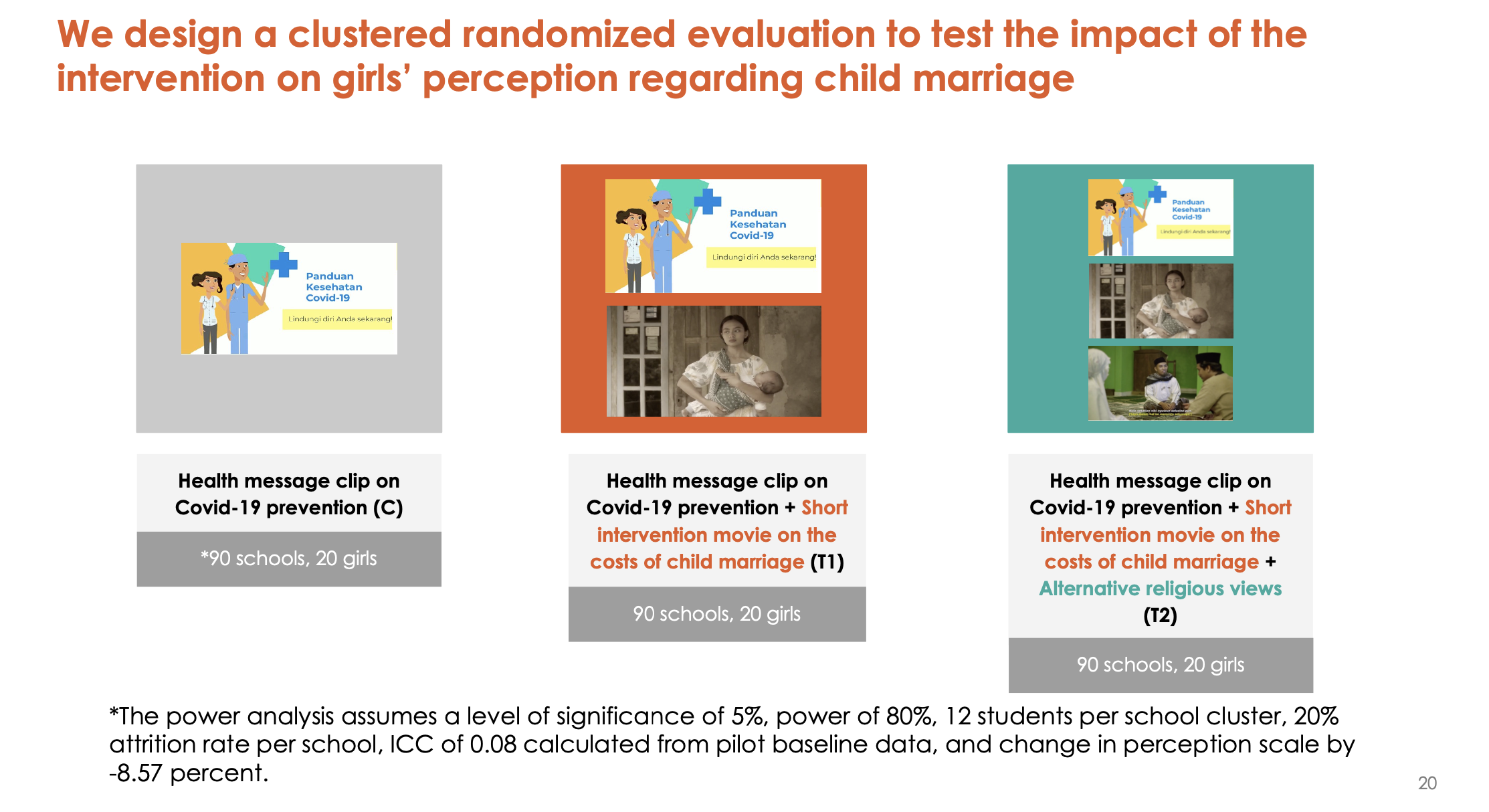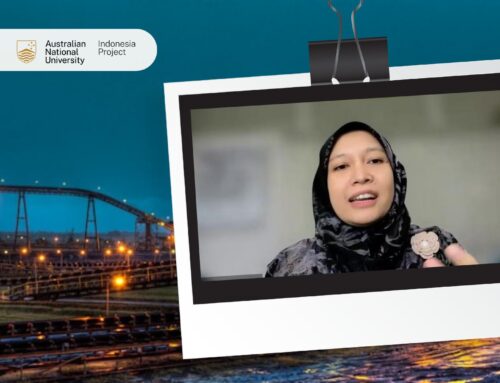FKP hosted by J-PAL Southeast Asia with Milda Irhamni (J-PAL Southeast Asia), Gumilang Aryo Sahadewo (Universitas Gadjah Mada and J-PAL Southeast Asia), and Santi Kusumaningrum (PUSKAPA/Center for Child Protection and Well Being, Universitas Indonesia). Thursday, 16 March 2023.
KEY POINTS:
- Child marriage remains a significant global issue. In 2020 it is estimated that 650 million girls and women in the World were married as children. Although progress has been made in reducing child marriage, it remains prevalent in many parts of the world, including Indonesia, where it is influenced by factors such as religion, culture, perceived socioeconomic benefits, and teenage pregnancies. Context-specific interventions are needed to address this complex issue.
- Targeted edutainment campaigns, delivered remotely via WhatsApp, is found to be able to significantly influence girls’ and their parents’ perceptions of child marriage, indicating a need for more comprehensive and focused information campaigns to dispel misconceptions about the perceived advantages of child marriage. Video interventions using narrative stories are found to be effective at changing perceptions and behaviors.
SUMMARY
- Despite progress in education and socioeconomic development, child marriage remains a significant issue, and in 2020 it was estimate that worldwide, 650 million girls and women were married as children. This harmful practice is associated with several negative outcomes, including risky pregnancy, high divorce rates, domestic violence, lower education and labor market participation. Although child marriage in Indonesia has decreased over the past decade, it remains prevalent in many provinces. Indonesia is now ranked 7th in the world for the absolute number of women marrying before the age of 18.
- Tackling child marriage is challenging because of its complex underlying factors, including socioeconomics and religion, making context-specific interventions crucial. However, similar interventions have produced mixed results across different cultural and geographical backgrounds. Moreover, there is limited published research on child marriage in Indonesia.
- In Indonesia, child marriage is influenced by four main factors: perceived religious values, culture, perceived socioeconomic benefits, and teenage pregnancies. Those who engage in child marriage focus on short-term gains, disregarding the long-term costs, and display a present bias in their decision-making.
- This study aims to examine the impact of informing girls about the costs of child marriage and the benefits of delaying the practice. It seeks to determine whether providing girls with this information can significantly change their attitudes toward child marriage and investigate whether religion plays a role in shaping perceptions of the issue.
- Research indicates that videos, including movies, TV series, and short films, are an effective means of delivering informational campaigns to change people’s perceptions and behaviors. Among types of video, the use of narrative story is shown to be the most effective at influencing perception. Based on this finding, the research team created a short movie in which the messages are delivered through scripted narration performed by actors. This is to ensure that messages are accessible to audiences from various socioeconomic and educational backgrounds.
- To address the issue of perceived socioeconomic benefits, the study developed messages that highlight the costs of child marriage and the benefits of delaying marriage. On the other hand, to address the issue of perceived religious codes, the study featured a male religious clerk in the film to deliver a message suggesting that marriage is sunnah while studying is mandatory, aligning with religious views.
- This study employed a clustered randomized evaluation to assess the impact of an intervention aimed at altering girls’ perceptions of child marriage. The study was implemented in East and Central Java districts, which have relatively high rates of child marriage. Due to the Covid-19 pandemic, the intervention was delivered remotely and data collection was conducted via electronic means (WhatsApp).
- The findings of the study demonstrate that targeted edutainment campaigns, delivered via WhatsApp, can significantly influence girls’ and their parents’ perceptions of child marriage, indicating that most child marriage actors are still unaware of the costs of child marriage and the benefits of delaying the practice. Furthermore, the video intervention was found to be cost-effective and had the potential to impact perceptions of child marriage among a larger target audience.
- This finding supports the need for more comprehensive and focused information campaigns aimed at dispelling misconceptions about the perceived advantages of child marriage. Key messages that future informational campaigns should consider include the loss of opportunities to pursue education and the loss of valuable time with friends and communities.
- Although the intervention’s effect with the inclusion of religious messaging was not significantly different from that without it, the estimated coefficients consistently demonstrated a stronger impact across different outcome variables. The study hypothesized that this outcome was due to the fact that less than one-fifth of the short movie touched on religious views. Nonetheless, the study suggests that it is possible to address sensitive religious issues without facing backlash. Given that religion is frequently cited as a key factor underlying child marriage in Indonesia, further research is required to explore the effective harnessing of religion to address child marriage.
- The discussion highlighted several crucial points. It is imperative for our society to continue in advancing the cause of eradicating child marriage. This is due to the fact that the issue is exceedingly complex, and while information and campaigns are useful, they can only accomplish so much. Furthermore, it is necessary to consider other factors, such as the limited opportunities for children to voice their opinions on this matter, rather than imposing moral judgments upon them. Finally, it is crucial to examine the religious aspect of child marriage and whether there is any gender bias within the institution or community.
